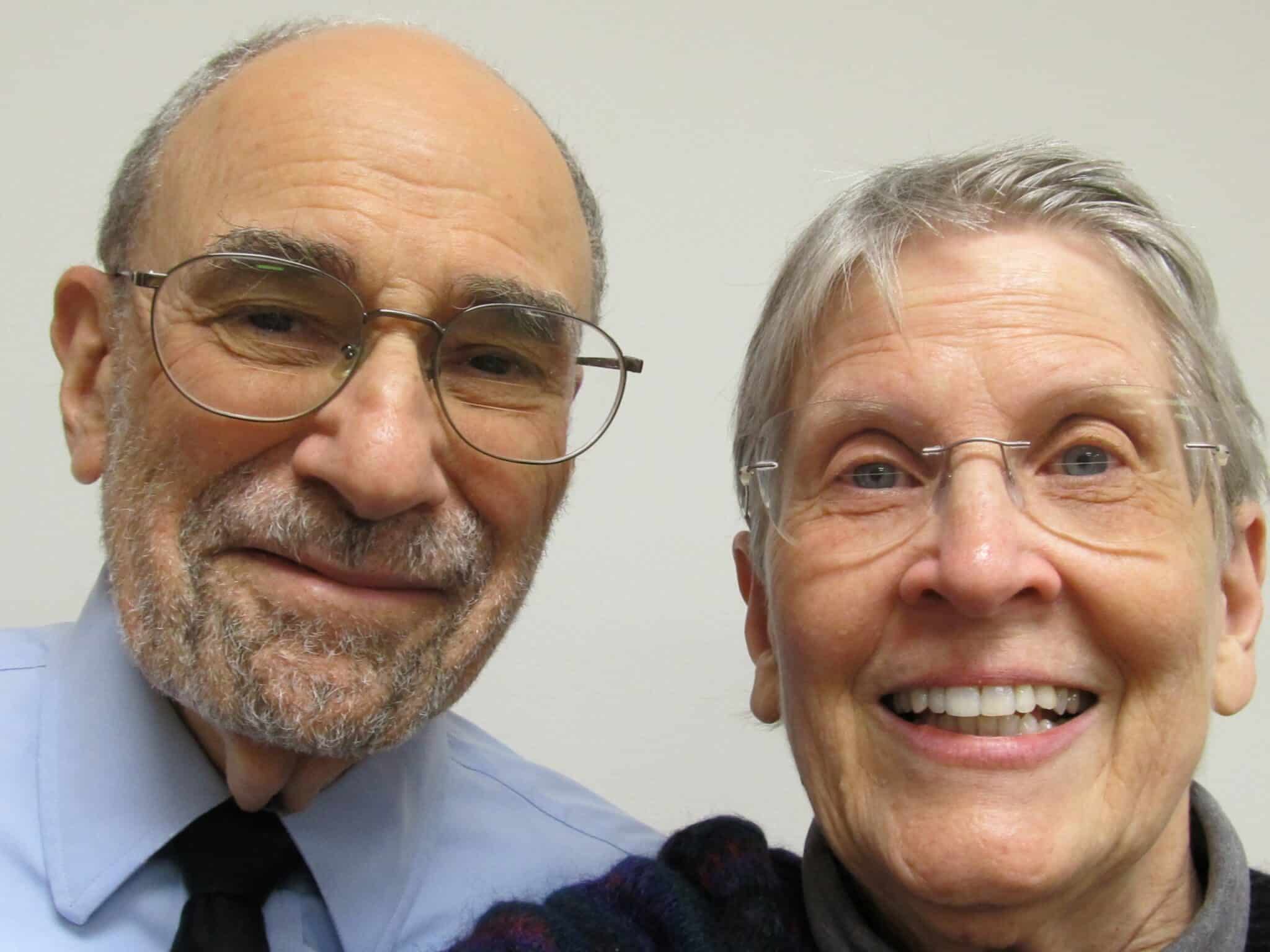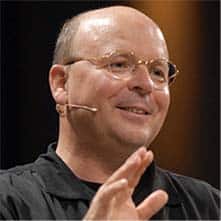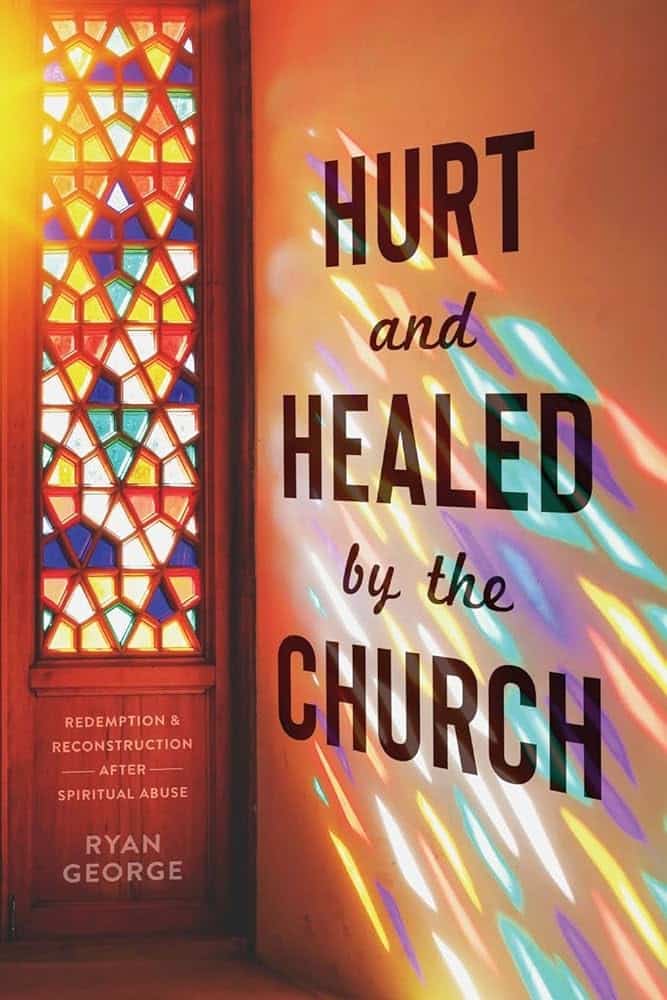Back in the heady church-growth days of the 1980s and 1990s, researchers John and Sylvia Ronsvalle began hearing caution creep into their interviews with church leaders.
Denominational leaders were especially uncomfortable when asked about declines in giving to overseas missions and projects to help the poor.
Sylvia Ronsvalle said the leader of one large congregation gave this blunt response: “Ah! No! We can’t promote missions because there won’t be enough for our seminaries.” She responded: “Well, I think people would be more interested in your seminaries if you were actually impacting global needs in Jesus’ name.”
That encounter, and many others, ended up in “Behind the Stained Glass Windows: Money Dynamics in the Church,” one of many publications the Ronsvalles have produced while leading Empty Tomb Inc. Their center also serves as a hub for missions in Champaign, Illinois, their home for 50 years.
Danger signs began decades ago. Giving to religious groups — defined in terms of potential donations based on after-tax incomes — peaked in 1960 and then began to decline, even as church membership numbers and budgets kept rising.
Your tax-deductible gift helps our journalists report the truth and hold Christian leaders and organizations accountable. Give a gift of $30 or more to The Roys Report this month, and you will receive a copy of “Hurt and Healed by the Church” by Ryan George. To donate, click here.
This trend “pre-dated many of the controversial issues that were to emerge by the end of the 1960s,” noted the 31st annual Empty Tomb report, based on 2019 numbers. In mainline and evangelical denominations, “per member giving in current dollars, as well as in inflation-adjusted dollars and as a portion of income” was lower in 2019 than the year before.
Then COVID-19 hit. But the pandemic’s impact in pews only made an ongoing charity funding crisis more obvious, said Sylvia Ronsvalle, in a telephone interview.
Membership and worship attendance numbers plummeted in recent decades in mainline churches and are now declining or plateaued in many evangelical groups. Meanwhile, marriage and birth rates keep falling, while the number of religiously unaffiliated Americans — the so-called “nones” — keeps rising.
The result is a survival mindset in which religious leaders focus on the “bottom line,” leading to fewer efforts to support mission work of all kinds.

The Empty Tomb report noted that, of the money donated to a typical congregation in 2019, “84% was spent on the church’s internal activities and 16% was spent on the larger mission of the church. Those numbers indicate a turning inward, compared to 1968, when 79% was spent on the church’s internal activities, and 21% was spent on the larger mission of the church.”
Meanwhile, Giving USA research has linked participation in worship and charity donations. A 2017 report said: “Most strikingly, those attending religious services once a month or more make an average annual religious contribution of $1,848, while those attending religious services less than once a month donate $111.”
Declines in membership and attendance mean less money for charities and missions work. This even affects giving to secular causes, noted the Empty Tomb report. A Philanthropy Roundtable study — “Less God, Less Giving?” — said “two thirds of people who worship at least twice a month give to secular causes, compared to less than half of non-attenders, and the average secular gift by a church attender is 20 percent bigger.”
In another bad sign, Gallup found that only 44% of Americans reported donations to religious groups in both 2020 and 2021. At least half of Americans gave to religious groups throughout the previous two decades, and in some years that figure was as high as 64%. Gallup also noted the link between falling donations and church membership declines.
Sylvia Ronsvalle said clergy need to start asking how they can make a case for religious faith and charity among young people who have been raised in a “What’s in it for me?” culture dominated by advertising and social media. Declining giving patterns suggest that, literally, Americans are not buying into a mere “survival” mindset in many churches.
The Empty Tomb report urged religious leaders to find an inspirational cause — such as mission efforts to cut global infant mortality rates — to help motivate young people.
The bottom line: Jesus doesn’t want little children to die.
“This is what the church needs to be saying to these young people: You are so much more than a consumer and we have this vision,” said Ronsvalle. “We need your participation. We need you to buy into the fact that Jesus loves the little children of the world.”
Terry Mattingly writes the nationally syndicated “On Religion” column for the Universal Syndicate and leads GetReligion.org. He lives in Oak Ridge, Tennessee and is a senior fellow at the Overby Center at the University of Mississippi.




















3 Responses
Is this surprising? We promote a church structure that is consumer oriented – worship services are structured as people silently sitting as an audience while someone provides entertainment in the form of music or a Bible lecture – and we are shocked that the church is consumeristic? This has only worsened with mega churches, celebrity pastors on radio and TV, and the Christian music and publishing industries. It’s much more than simply encouraging people to become less consumeristic. The entire structure is screaming that I should be spiritually consumeristic. Perhaps the entire structure needs to be critically evaluated and changed.
That’s one great thing about a liturgy. It’s all scripted, written down in a book that had to be approved by a large group of leaders, and has been tested and honed over years, decades, centuries. Active participation is built in.
Worship is performance driven, more money spent on providing that. I see churches boast of their work against Scripture (Matt. 6:1-4). Some churches spend money on “gifts” to bring in people for conferences. It is kingdom driven but not God’s, today. Promoting themselves is the norm.